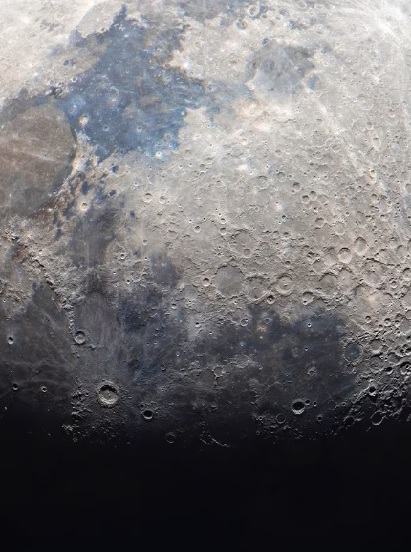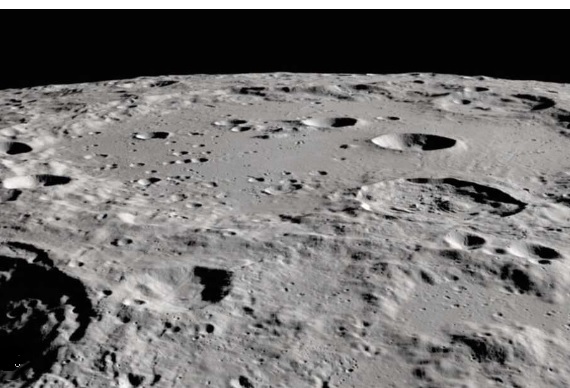Unleash the Adventure: Dive into GIGAMOON’s 280K Photo Marve
Photographer Andrew McCarthy has achieved a stunning feat in capturing the Moon like never before. By stitching together 280,000 separate photos taken over two hours from his backyard in Arizona, US, McCarthy has created an interactive picture of the Moon that allows viewers to zoom in on well-known landmarks such as the Apollo landing sites, as well as catch sight of the northerly Plato crater, which is rarely seen from Earth due to its position. Here’s everything you need to know about the Gigamoon.
Capturing the Gigamoon: A long-awaited dream come true

McCarthy had been planning the Gigamoon for years and attempted it dozens of times before he finally succeeded. The two telescopes he used for this project were a 12″ Newtonian telescope and an 11″ SCT. Despite many unsuccessful attempts, he finally got the best conditions and was able to capture the clearest view of the Moon he has ever seen.
Exploring the landmarks of the lunar surface

The interactive picture of the Gigamoon offers a mesmerizing view of the Moon’s mysterious lunar surface. By zooming in, viewers can explore any crater on the Moon that’s larger than half a mile wide. The result is stunningly clear and consistent across the surface, which is a challenging feat for major projects like this. The Gigamoon allows us to get up close with recognizable craters such as Copernicus, Tycho, Plato, Eratosthenes, and Clavius.
Famous craters on the Moon’s nearside
The Gigamoon allows us to see famous craters on the Moon’s nearside, including Copernicus, Tycho, Clavius, and Plato. Copernicus is one of the most prominent craters on the near side of the Moon, formed around 800 million years ago. Debris from this site was sampled by Apollo 12 astronauts during their mission almost 54 years ago.
Tycho is located in the rugged southern highlands of the lunar surface and is of scientific interest because it is so well preserved. NASA also believes that some samples collected at the Apollo 17 landing site originated from Tycho. Clavius is one of the oldest and largest craters on the Moon’s nearside, located in the far south. It is famously featured in Stanley Kubrick’s 2001 Space Odyssey, hosting a fictional Moon base. Plato is rarely seen as it truly is from Earth due to its position in the north of the Moon’s nearside.
A rare view of the Moon
The Gigamoon provides a rare view of the Moon that we wouldn’t be able to see otherwise. Even the northerly Plato crater, which is difficult to see from Earth due to its position, is captured in stunning detail in the Gigamoon. There’s also a relief to the image caused by shadows elongated near the lunar terminator, which illustrates the diverse types of terrain on the Moon.
The final result

McCarthy spent around two hours switching between the telescopes to capture photos of the Moon from his backyard in Arizona. He then pulled the images into one 1.3 gigapixel final result, which he named the Gigamoon. The quality is fairly consistent across the surface, which is really hard to do with these major projects, so it’s quite serendipitous that the sky cooperated with McCarthy to create this image.
conclusion
In conclusion, the Gigamoon is a stunning achievement that offers a mesmerizing view of the Moon’s mysterious lunar surface. McCarthy’s long-awaited dream has finally become a reality, allowing us to get up close with landmarks of the lunar surface, including the Apollo landing sites, and catch sight of the rarely
Also read this post for more updates: Breaking News: Revolutionary Advancement: Human Genome Enhanced for Equitable and Inclusive Future
Airwallex Expands to Israel and Targets Cyber Security Acquisitions
10 AI Tools to Enhance Work Efficiency: Productivity Boosters.
Twitter vs Blue Sky: The Battle for Social Media Supremacy
Breaking: Japanese Lunar Lander Loses Contact with Ground Control
Why Northern Lights aurora borealis shifted in the United States: A Natural Phenomenon Explained
FAQ
Q: Who created the Gigamoon?
A: Photographer Andrew McCarthy.
Q: How many photos were used to create the Gigamoon?
A: 280,000.
Q: What landmarks on the Moon can be seen in the Gigamoon?
A: Apollo landing sites, Copernicus, Tycho, Plato, Eratosthenes, and Clavius craters.
Q: How was the Gigamoon created?
A: By stitching together multiple photos taken with two telescopes from Andrew McCarthy’s backyard in Arizona.
Q: Can viewers zoom in on specific craters in the Gigamoon?
A: Yes, any crater larger than a half mile wide can be zoomed in on.
Q: When was the Gigamoon created?
A: The article does not provide a specific date.
Q: Why is the Gigamoon a significant achievement?
A: It offers a mesmerizing and unprecedented view of the Moon’s surface, including landmarks and craters rarely seen from Earth.